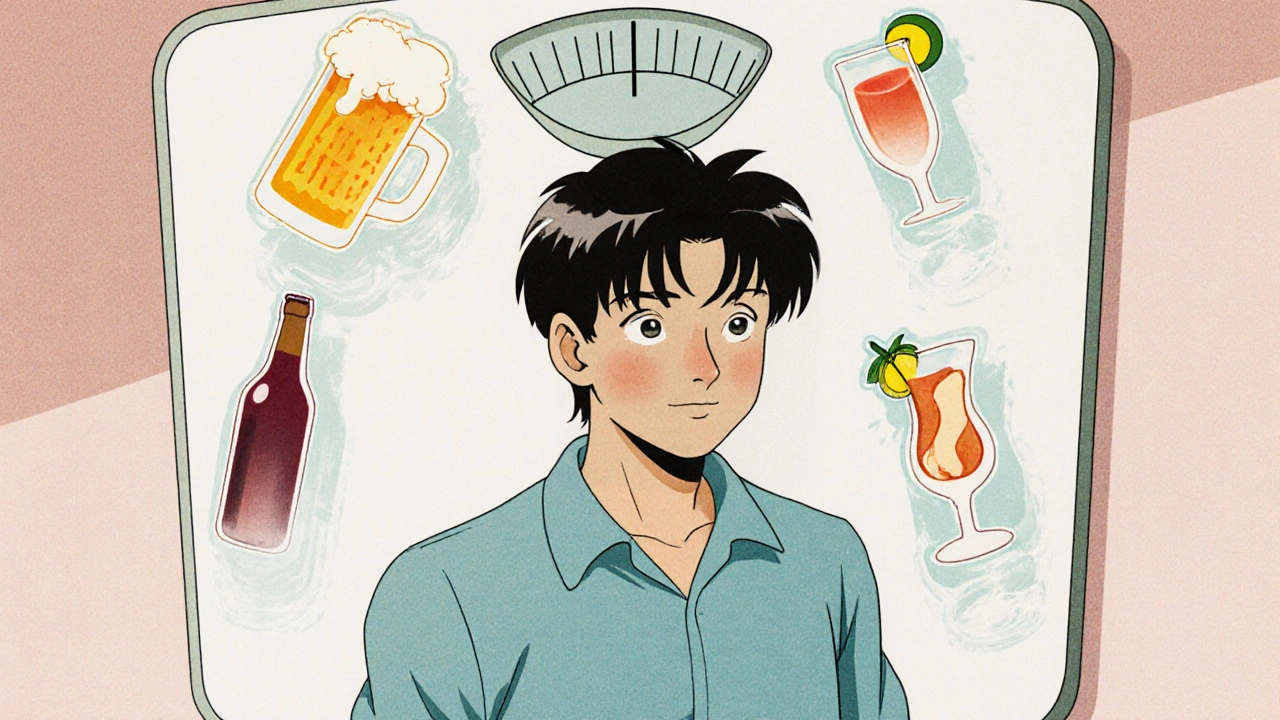Alcohol Calories: How Much You're Really Drinking and What It Does to Your Body
When you drink alcohol, you're consuming alcohol calories, empty energy from ethanol that your body treats like a toxin, not fuel. Also known as ethanol calories, these aren't like the calories from carbs or fats—they don't trigger fullness, don't provide nutrients, and force your liver to prioritize burning them off before anything else. That means if you're eating dinner and having a beer or glass of wine, your body puts your food on hold and burns the alcohol first. This slows fat loss, increases fat storage, and makes it harder to control your weight—even if you're eating "clean."
One gram of alcohol has 7 calories, almost as much as fat (9 calories per gram). A standard 12-ounce beer has about 150 calories, a 5-ounce glass of wine has 120, and a shot of vodka (1.5 oz) has around 97. But here's what most people miss: mixers add way more. A rum and coke can hit 300 calories. A margarita? Often over 500. And because alcohol lowers your self-control, you're more likely to snack on chips, pizza, or fries after drinking. That’s not just alcohol calories—it’s a double hit.
Alcohol also messes with your metabolism, the way your body turns food into energy. When ethanol is in your system, your liver stops burning fat and starts breaking down alcohol instead. This process creates acetaldehyde, a toxic byproduct that causes hangovers and can damage your liver over time. Your body doesn’t store alcohol—it has to clear it fast. That’s why drinking regularly can lead to fatty liver, even if you’re not overweight. And while some people think "red wine is good for your heart," the truth is: any benefit is tiny compared to the risks. The American Heart Association says if you don’t drink, don’t start. If you do drink, limit it—no more than one drink a day for women, two for men.
People who track their food but ignore drinks are often shocked when the scale won’t budge. That’s because alcohol calories sneak in without nutrients, without satiety, and without warning. A glass of wine after work, a few beers on weekends—it adds up to 1,000 extra calories a week. That’s over 50,000 calories a year. One pound of fat is 3,500 calories. You’re gaining nearly 15 pounds a year just from drinks.
It’s not just about weight. Alcohol affects sleep, hormones, and even how your body uses protein. It can make muscle recovery slower, increase belly fat, and worsen insulin resistance. If you’re on medications for diabetes, high blood pressure, or mental health, alcohol can make side effects worse or even dangerous. Mixing alcohol with opioids or sedatives? That’s a known killer.
What you’ll find below are real, research-backed posts that break down exactly how alcohol calories work, how they interact with common medications, why they sabotage weight loss, and what you can actually do to cut back without feeling deprived. No fluff. No myths. Just clear facts from people who’ve seen the effects firsthand—in clinics, in labs, and in patients’ lives.

